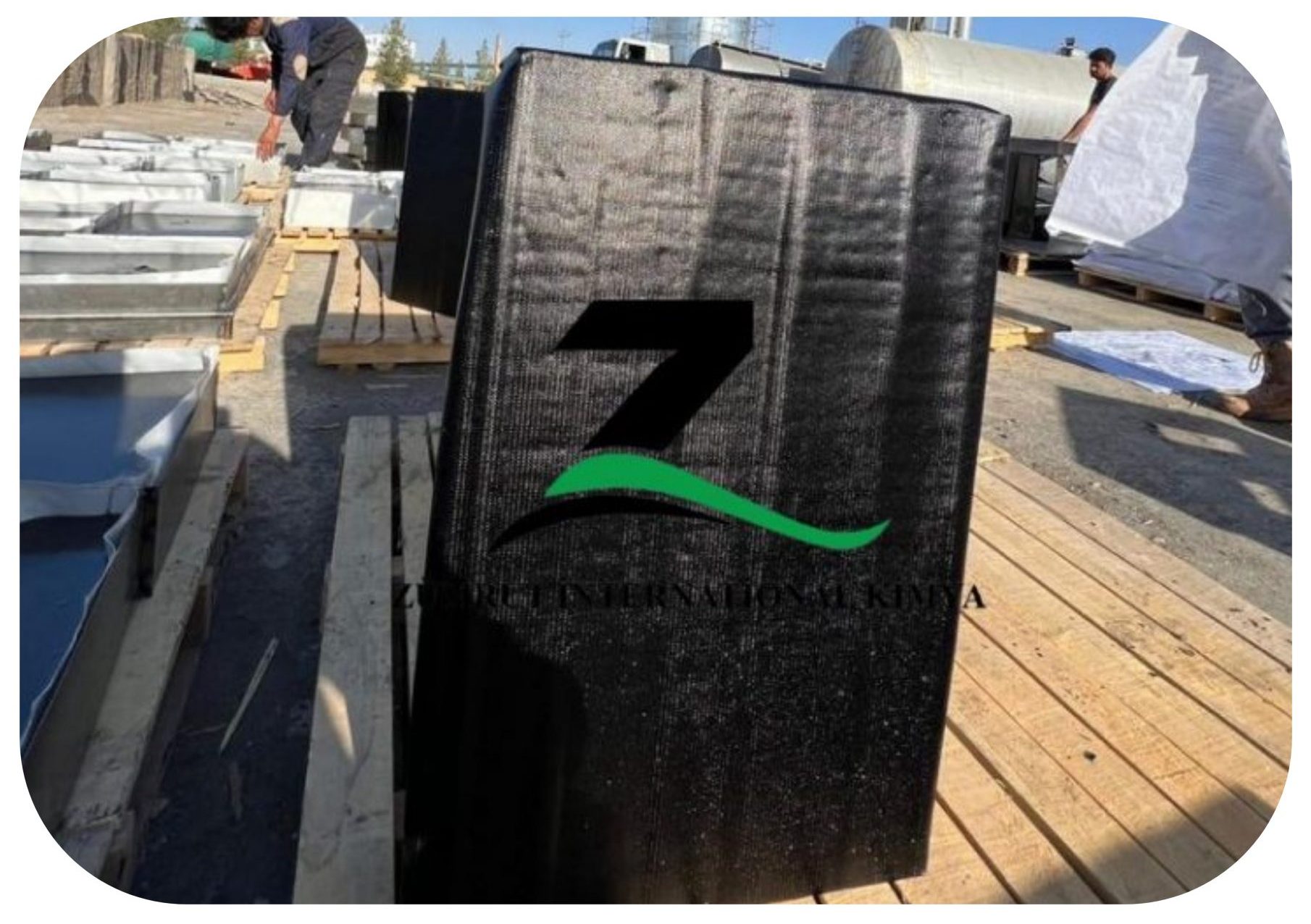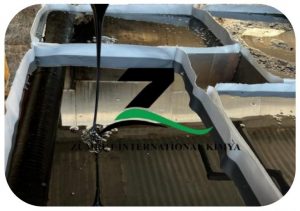
What is Oxidized Bitumen 90/15?
Oxidized Bitumen 90/15 is a semi-solid, thermoplastic petroleum bitumen product. It is made by blowing hot air into penetration-grade bitumen (usually 60/70), which yields a product of higher viscosity, thermal stability, and high adhesion. The numbers 90/15 represent its softening point (around 90°C) and penetration value (15 dmm), according to ASTM D36 and D5 standards respectively.
Production of Oxidized Bitumen 90/15
Manufacturing involves heating the base bitumen to a temperature ranging from 250–300°C and introducing air at controlled flow and pressure. Oxidation in the process leads to molecular cross-linking and stiffening of the product, which increases its aging, deformation, and weathering resistance. Final product properties are adjusted through control over air-blow time and temperature, making it ideal for industrial and construction applications.
Typical Applications of Oxidized Bitumen 90/15
Waterproofing Systems
Its high softening point and low penetration rate are ideal for waterproofing roofs, foundations, tunnels, and basements. It creates a durable barrier that is resistant to water penetration in extreme weather conditions.
Road and Pavement Construction
90/15 reinforces asphalt mixes, especially where traffic is high and there is temperature stress. It is used in overlays, crack filling, and structural reinforcement.
Adhesives and Sealants
Because of its higher bonding strength, it is used widely in the manufacture of industrial adhesives and flexible sealants, especially in the automotive and construction sectors.
Protective Coatings
This grade is usually used as a coating for pipelines, metallic structures, and tanks. It has corrosion-, chemical-, and moisture-resistant properties—making it suitable for marine, oil & gas, and utility sectors.
Insulation Materials
It is utilized as a raw material for the production of heat and sound insulating materials, due to its binding characteristics and thermal stability.
Oxidized Bitumen 90/15 vs 90/10
Oxidized Bitumen 90/15 and 90/10 both have a softening point around 90°C, but differ in penetration and hardness. The 90/15 grade has a penetration value of approximately 15 dmm, making it moderately hard with some flexibility, suitable for applications that require a balance between durability and pliability, such as waterproofing in warm climates and industrial coatings.
Meanwhile, the 90/10 grade is harder and more brittle, with a lower penetration of about 10 dmm, offering higher thermal resistance and stiffness, ideal for heavy-duty waterproofing and high-temperature environments. Choosing between these two depends on the desired combination of flexibility and hardness for the specific project needs.
|
Oxidized Bitumen 90/10 is a high-quality bitumen product manufactured via controlled air-blowing where hot air passes through grade 60/70 petroleum bitumen. The process is carried out in the absence of chemical catalysts, giving a semi-solid product with high softening point, good heat stability, and low sensitivity to temperature changes. The term “90/10” is named for its usual values for softening point (90°C) and penetration rate (10 dmm). |
Storage & Handling Instructions
Bitumen should be stored in a cool, dry, and well-ventilated area, away from direct sunlight, water, and any heat sources. During handling, only indirect heating methods such as oil-jacketed kettles should be used to melt the product safely, taking care not to overheat to prevent the release of harmful fumes.
Personnel must wear appropriate personal protective equipment (PPE) at all times, including heat-resistant gloves, safety goggles, and protective clothing. The working area must remain well-ventilated to prevent vapor accumulation. In case of spills, cleanup should be carried out using suitable solvents, strictly following safety protocols.
Packing Options
Oxidized Bitumen 90/15 is packed in:
20 kg and 50 kg Kraft Paper Bags
25 kg Carton Boxes
Steel Drums (150, 180, 200 kg)
Molded Polyamide Bags (for convenience of application and faster cooling)
Kraft paper bags are recyclable and can be shipped palletized or loose. Molded forms are slightly more expensive but highly convenient for high-speed applications.
Why Choose Oxidized Bitumen 90/15?
Oxidized Bitumen 90/15 has a good compromise between flexibility and hardness. It’s ideal to be used in applications requiring heat resistance, durability, and good adhesion—especially under harsh industrial environments. Being doubly useful as both a waterproofing and protective coating, it is an ideal, cost-effective solution for long-term infrastructure requirements.
Specification of Oxidized Bitumen 90/15
| Properties | Test Method | Unit | Specification |
|---|---|---|---|
| Specific gravity at 25/25 C | ASTM D70 EN 15326 | (Kg/m3) | 1.05 approx. |
| Penetration at 25°c | ASTM D5 EN 1426 | mm/10 | 10/20 |
| Softening point °c | ASTM D36 EN 1427 | °C | 85/95 |
| Loss on heating (wt) % | ASTM D6 EN 13303 | Wt. % | 0.2 max |
| Flashpoint c | ASTM D92 EN ISO 2592 | °C | 250 min |
| Solubility is CS2 (wt) % | ASTM D4 EN 12592 | Wt. % | 99.5 max |
| Stop test | A.A.S.H.O.T 102 | – | negative |
FAQs
Is Oxidized Bitumen 90/15 suitable for cold climates?
It performs optimally in moderate to warm climates but can be used in cold climates when compounded correctly. However, for extremely cold climates, a softer grade (e.g., 90/40) may perform better.
What is the shelf life of Bitumen 90/15?
It can be stable for over 12 months when stored correctly.
Is it environmentally friendly?
Being a petroleum product, it is not eco-friendly by nature. Nevertheless, there are producers who follow ISO 14001 guidelines to reduce its effect on the environment.
Is it possible to reheat it several times?
Yes, but the temperature should be controlled to avoid polymer breakdown or too much fume emission.


